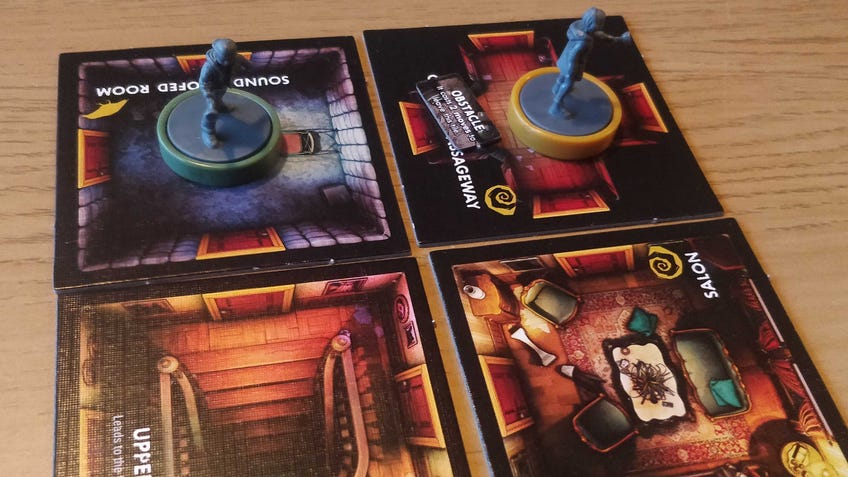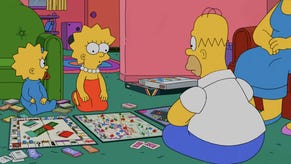Betrayal at House on the Hill: Third Edition offers the horror game's most immersive experience yet - preview
A horrifyingly good first impression.
It’s a known fact that Betrayal at House on the Hill has one or two problems. Despite remaining one of my favourite board games Betrayal suffers from unbalanced gameplay mechanics, a confusing rulebook, haunt scenarios that are very hit and miss, and components that would look at home in a shlocky, low budget ‘90s toy commercial. None of this prevents Betrayal from being a good game, most of the time, but it has made it difficult to wholeheartedly recommend. Not everyone is going to be able to overlook the messy balancing, the befuddling rules and other issues that plague the 2004 edition.
Thankfully, Betrayal at House on the Hill: Third Edition appears to fix many of these problems. I say appears, because I’ve only managed to get my hands on the upcoming board game just once, which isn’t enough time to give absolute confirmation that these issues don’t crop up somewhere. However, during my first few hours with Betrayal: Third Edition I had a blessedly smooth experience that provided all the usual frights and fun the previous edition has without its problems.
Whilst I have great fondness for the previous edition’s lurid green cover, pulpy artwork and miniatures that look like they’ve been put in the microwave for a few seconds, Third Edition is where the series feels like it’s been given the pampering that it deserves. The cover is stylish and evocative, providing players with a clearer idea of what the game entails. Its artwork is all shiny and new, still drawing on those pulp horror elements but in a way that’s far more pleasing to the eye. Even the miniatures have received an upgrade, with each one feeling more solid and actually looking like the characters they’re supposed to represent. Every miniature also has a coloured base, making them easy to identify even when they haven’t been painted yet.

All in all, the whole package has a higher-quality feel to it, which would be enough of a reason for many fans of the series to pick up a copy. However, there are more reasons to be excited for Betrayal: Third Edition than just its good looks. There have been some quality-of-life changes featured in Third Edition that make a lot of sense. Besides the removal of theft as a gameplay mechanic – apart from when specific Haunt scenarios include it – easily the biggest changes to the way that Betrayal works are in the altering of player turns and haunt rolls. Whilst the previous edition has a player’s turns end whenever they have to draw a card – or if they run out of speed – Betrayal: Third Edition stops player turns whenever they discover a new room, run out of speed or choose to end their turn.
The alterations made to player turns change the pace of the game quite a lot, with each turn ending sooner than before and the house taking longer to expand. In some ways, this has potential to exasperate the issue that Betrayal can sometimes have where there isn’t enough space for certain haunts to play out in. However, I didn’t experience this issue in my playthrough. More importantly, it makes every omen, event and item draw feel more momentous because they don’t necessarily occur on every player’s turn. Rather than being something that happens almost constantly to everyone, events, omens and item draws have more of an impact this time around.
The entire haunt experience felt surprisingly smooth throughout.
When it comes to the changes made to haunt rolls, instead of needing to roll above the amount of omens in play, whenever a haunt roll is performed in Third Edition players roll as many dice as there are omens and must roll under five to prevent a haunt. (Similarly to the haunt roll system in the spin-off title Betrayal at Baldur’s Gate.) This change immediately makes it less likely for a haunt to occur quite so early on in the game, thereby preventing scenarios that I’ve found myself in wherein the entire haunt is broken because there isn’t enough space or the survivors don’t have enough items to arm themselves with. It’s impossible to trigger a haunt until there are at least three omens in play, with the likelihood of the haunt trigger naturally increasing from there. Interestingly enough, the haunt still triggered relatively early in the game of Betrayal: Third Edition I played, but our experience was thankfully not hampered by that.
In fact, the entire haunt experience felt surprisingly smooth throughout. Apart from one instance wherein our traitor missed some important information – which was soon rectified – both the survivors and the traitor quickly grasped what they needed to do. I won’t spoil it, just in case readers happen to trigger it on one of their playthroughs, but the haunt’s thematic and gameplay elements fed into one another in a way that felt immersive.
However, the best new way that Third Edition immerses players is through the introduction of starting narratives. Why Betrayal’s cast of characters ever wanted to enter a dilapidated mansion was always unclear, with the assumption that this is just what happens in a classic horror story. With Third Edition, players are now provided with a selection of different starting narratives explaining why their characters chose to walk into the titular house on the hill.
Betrayal is a board game about telling scary stories, so it’s apt that this new edition should help make those stories feel even more memorable.
The starting narrative that players began the game with will also be one of the factors that determine that playthrough’s eventual haunt, alongside what omen triggered it. This gameplay mechanic doesn’t just enable players to potentially avoid any haunts they might have previously encountered – with every starting narrative having the chance to lead to a select number of haunts – but it makes the haunt feel better connected to the story of that playthrough. For instance, we began the game with the starting narrative of being cursed and wanting to find a cure in the house, so this aspect of our story then became a part of the haunt we played.

This doesn’t have a huge impact on the haunt itself, but it does change the Betrayal experience for the better. Ultimately, Betrayal is a board game about telling scary stories, so it’s apt that this new edition should help make those stories feel even more memorable. I’m planning on playing more Betrayal once the game is fully released next month, which should give me a better idea of how the rules work when other factors are introduced.
Until then, thanks to a strong first showing, I am undeniably excited to see what other tricks Betrayal: Third Edition has up its sleeves.
Betrayal at House on the Hill will be released in the UK on April 1st, with a US release in August.




